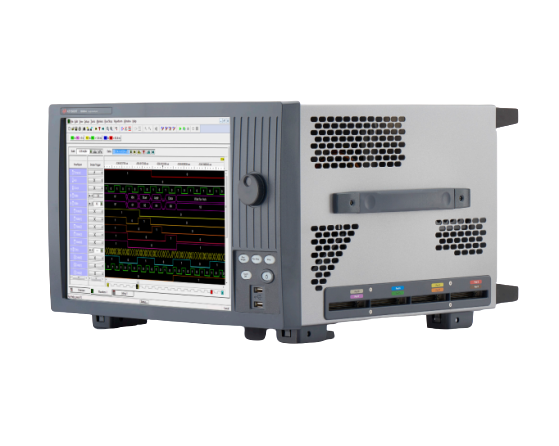Logic analyzers
Basic understanding of logic analyzers
Logic analyzers play an important role in many fields of research and production. Let’s explore the characteristics of this device with EMIN and find the right choice for your needs.

What is a logic analyzer?
A logic analyzer is a specialized device that records, displays, and analyzes multiple electrical signals simultaneously in an electronic circuit. This device allows users to observe the relationship and timing sequence between signals, thereby easily detecting abnormalities in the operation of the system.
In addition to signal processing capabilities, the device also supports decoding many digital communication protocols such as I2C, SPI, UART… quickly checking, troubleshooting, and optimizing the performance of electronic circuits as well as data transmission systems.
Types of logic analyzers
- Benchtop logic analyzers are usually quite large in size, sometimes even larger than oscilloscopes. This type of device is fully equipped with the necessary functions to record, display, and analyze digital signals. The device comes with built-in probes, a display screen, cursor control buttons, and even a dedicated keyboard, helping users operate quickly and intuitively.
- Logic analyzer modules are plug-in cards that can be installed into racks or computers. Users can easily change modules to perform different experiments on circuit boards or breadboards, depending on work requirements.
- PC-based logic analyzers work in conjunction with a computer to display and process the collected data. This is a separate device, connected via computer accessory ports and containing high-speed data acquisition circuits. The information obtained will be transmitted to analysis software on the computer. Due to the requirement for fast transmission of large amounts of data, most of these devices use high-speed wired connections such as USB or Ethernet.
Why prioritize choosing a logic analyzer?
Oscilloscopes can also measure digital signals, but they are often limited by the number of measurement channels. They are ideal tools for monitoring voltage changes over time between two points in a circuit, but when it comes to in-depth analysis of complex digital circuits, logic analyzers excel.
This device can work with many channels at the same time, allowing accurate description of the operation of digital circuits such as FPGA, or supporting embedded software debugging by monitoring and analyzing input/output pins (GPIO). In addition, it can quickly measure and decode many types of digital protocols, thereby shortening the time for testing and troubleshooting.
In particular, PC-based logic analyzers have the advantages of compact size, portability, and usually more competitive prices, suitable for both research and practical applications.
Summary of special features of logic analyzers
1. Ability to record multiple input channels simultaneously:
One of the greatest advantages of logic analyzers is the ability to simultaneously record multiple input channels, typically from 8 to more than 100 channels. While oscilloscopes can also record digital data, they are unlikely to achieve the number of channels and recording duration of logic analyzers, due to limitations in analog data storage memory.
2. Support for various trigger modes:
In addition, the device supports very flexible signal trigger modes. Users can set it to start recording when a specific event occurs, from simple conditions such as the rising or falling edge of a channel, to complex combinations including multiple edges or states on different channels.
3. Mixed-signal measurement capability:
Many modern models, typically some Keysight logic analyzer series, are equipped with mixed-signal measurement capability, both analyzing digital waveforms and processing analog waveforms. This feature makes testing and describing complex electronic systems simpler and more efficient, especially in R&D environments or electronic device repair.
Some outstanding models currently supplied by EMIN:
Model Keysight 16861A (34 channels, 2.5 GHz)
Model SUIN SA8320 (32 CH)
Comes with additional software
The included software helps users easily navigate and process large amounts of collected data. You can zoom in, zoom out, pan, and search for information in the signal quickly, while also viewing real-time data similar to an oscilloscope when needed.
4. Data decoding and search function:
In addition to measurement capabilities, logic analyzers are also notable for their data decoding and search functions. Most current digital communication systems operate based on specific protocol sets, and many models have integrated protocol analysis tools to help users understand the collected data. When data is recorded, the device allows searching for specific signal patterns or values. For example, in the I2C protocol, you can search for the device address to determine the transmission start time. Some devices also support setting the search pattern right from the trigger condition, helping to start recording data exactly at the desired time, saving time, and improving analysis efficiency.
Where to buy a reliable logic analyzer
EMIN specializes in providing professional, genuine measurement and logic analysis equipment from the world’s leading brands such as Keysight, Saleae, Leaptronix, Acute,... customers will be advised on choosing the right model, guided on usage, practical applications, and supported with warranty and after-sales service. Contact EMIN now to own the logic analyzer that best meets your needs.
-
-
-
-
-
-
-
-
-
-
-
-
-
-
-
-
-
-
-
-
-
-
-
-
